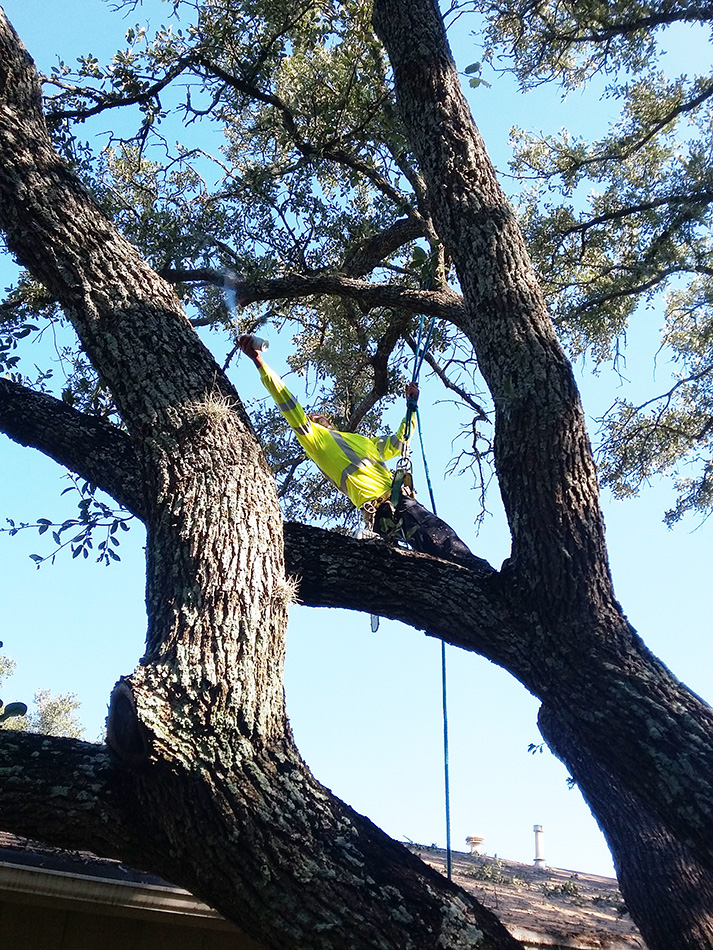Trees bring such great beauty and benefits to your landscape, so it’s no wonder it can be difficult to part with them. While a tree may seem healthy by all accounts, it could be a danger to everything around it. Dead, dying or otherwise hazardous trees can cause thousands of dollars in damage, along with the costs of personal injury.
So, how do you know if you require hazardous tree removal?
You may not realize one of your trees is a threat until after a storm or heavy snow exposes its vulnerabilities. While tree removal is typically a last resort, it may be necessary if pruning or disease mitigation are insufficient. The good news is, you can often tell if a tree is struggling by analyzing roots, trunk and branches. If it is, it’s time to seek a tree removal service.
Read on for some other red flags.
It’s Time to Call Tree Removers If…
… you see signs of infection, such as discolored or misshapen leaves, deep splits in the bark, crown dieback, soft crumbling wood or visible fungi.
… your notice holes or woodpeckers feeding heavily on the tree. This may be a sign of unwanted pests.
…there are dead branches in the tree’s crown (known as widow-makers). If 50 percent or more of the tree is damaged or dead, you probably require hazardous tree removal services for safety reasons.
…the tree isn’t growing well. If you notice discolored foliage, thin leaf cover or stunted growth, your tree may be in trouble. This is especially true if the trees growing near it are healthy and vibrant.
…there’s evidence of root defects. While not easily noticeable, soil and fungi growth near the tree’s base are both signs of root problems.
Partner with a Trusted Tree Removal Service
If you’re wondering about a dangerous-looking tree, don’t wait to get a professional opinion. With deep knowledge of the tree species and your local area, expert tree removers can handle it safely and efficiently, before it wreaks havoc on your property.

